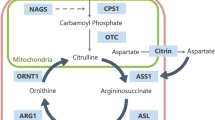Summary
Proton magnetic resonance spectra of biological fluids such as urine, plasma and cerebro-spinal fluid can be used for multi-component analysis of highly concentrated species, thus providing information about the general metabolism of the patient. Hydrogen containing analytes in concentration higher than 10µM are indeed often detectable in biological fluid in 15 minutes by means of an unexpensive 200 MHz spectrometer essentially without sample manipulation. Amino acids, keton bodies, organic acids and other metabolites can be easily estimated by this approach; consequently this technique represents a powerful tool particularly in the diagnosis of inborn errors of amino acid metabolism, when improving the prognosis often depends on a very early diagnosis and on an effective method for monitoring the effects of therapy.
In the present paper, several cases of inherited diseases related to amino acid impaired metabolism will be presented to illustrate the importance in the diagnosis. Phenylketonuria, tyrosinemia, cystinuria, ornithinemia, argininosuccinic aciduria, maple syrup urine disease (MSUD), alkaptonuria, lysinuria and other genetic pathologies were in fact unambiguously and rapidly diagnosed by means of the identification in the biological fluids of the relevant accumulating amino acids and/or of their metabolites. The proposed technique is suitable to become, in the future, a useful routine tool for a wide neonatal screening.
Similar content being viewed by others
References
Bales JR, Higham DP, Howe I, Nicholson JK, Sadler PJ (1984) Use of high-resolution proton nuclear magnetic resonance spectroscopy for rapid multi-component analysis of urine. Clin Chem 30: 426–432
Bradamante S, Barchiesi E, Colombo P, Zoppi F (1987) Nuclear magnetic resonance spectroscopy. Applications in clinical biochemistry. Biochim Clin 11: 783–790
Iles RA, Chalmers RA (1988) Nuclear magnetic resonance spectroscopy in the study of inborn errors of metabolism. Clin Sci 74: 1–10
Lehnert W, Hunkler D (1986) Possibilities of selective screening for inborn errors of metabolism using high resolution 1H-FT-NMR spectrometry. Eur J Pediatr 145: 260–266
Petroff OAC, Yu RK, Ogino T (1986) High resolution proton magnetic resonance analysis of human cerebrospinal fluid. J Neurochem 47:1270–1276
Pontoni G, Dardo G, Martuccio C, Rotondo F, Cartenì-Farina M (1990) Use of proton nuclear magnetic resonance spectroscopy in the diagnosis of inborn error of aminoacid metabolism. Biochim Clin 14: 1498–1450
Pontoni G, Rotondo F, Dardo G, Cartenì-Farina M, Zappia V (1994) Proton magnetic resonance spectroscopy of biological fluids: a powerful tool in the diagnosis of inherited metabolic diseases. Eur J Clin Chem Clin Biochem 32: A7
Tofts PS, Wray S (1988) A critical assessment of methods of measuring metabolite concentration by NMR spectroscopy. NMR Biomed 1: 1–10
Wevers RA, Engelke U, Heerschap A (1994) High resolution 1H-NMR spectroscopy of blood plasma for metabolic studies. Clin Chem 40: 1245–1250
Author information
Authors and Affiliations
Rights and permissions
About this article
Cite this article
Pontoni, G., Rotondo, F., Cartenì-Farina, M. et al. Diagnosis and follow-up of inborn errors of amino acid metabolism: Use of proton magnetic resonance of biological fluids. Amino Acids 10, 305–315 (1996). https://doi.org/10.1007/BF00805859
Received:
Accepted:
Issue Date:
DOI: https://doi.org/10.1007/BF00805859




